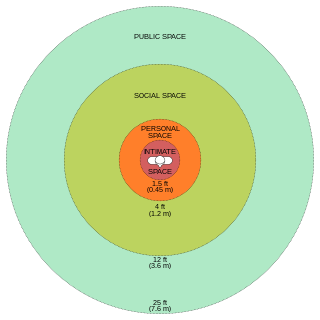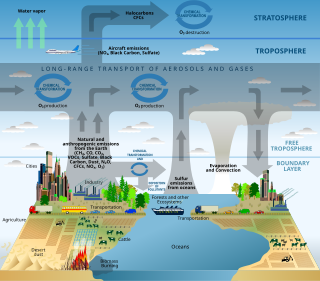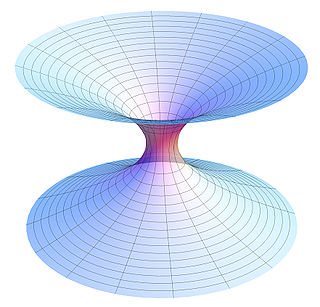Related Research Articles
A mathematical model is an abstract description of a concrete system using mathematical concepts and language. The process of developing a mathematical model is termed mathematical modeling. Mathematical models are used in applied mathematics and in the natural sciences and engineering disciplines, as well as in non-physical systems such as the social sciences. It can also be taught as a subject in its own right.
The following outline is provided as an overview of and topical guide to physics:
A paradigm shift is a fundamental change in the basic concepts and experimental practices of a scientific discipline. It is a concept in the philosophy of science that was introduced and brought into the common lexicon by the American physicist and philosopher Thomas Kuhn. Even though Kuhn restricted the use of the term to the natural sciences, the concept of a paradigm shift has also been used in numerous non-scientific contexts to describe a profound change in a fundamental model or perception of events.

Determinism is the philosophical view that all events in the universe, including human decisions and actions, are causally inevitable.
An interpretation of quantum mechanics is an attempt to explain how the mathematical theory of quantum mechanics might correspond to experienced reality. Although quantum mechanics has held up to rigorous and extremely precise tests in an extraordinarily broad range of experiments, there exist a number of contending schools of thought over their interpretation. These views on interpretation differ on such fundamental questions as whether quantum mechanics is deterministic or stochastic, local or non-local, which elements of quantum mechanics can be considered real, and what the nature of measurement is, among other matters.

Uncertainty or Incertitude refers to epistemic situations involving imperfect or unknown information. It applies to predictions of future events, to physical measurements that are already made, or to the unknown. Uncertainty arises in partially observable or stochastic environments, as well as due to ignorance, indolence, or both. It arises in any number of fields, including insurance, philosophy, physics, statistics, economics, finance, medicine, psychology, sociology, engineering, metrology, meteorology, ecology and information science.
Scientific realism is the view that the universe described by science is real regardless of how it may be interpreted. A believer of scientific realism takes the universe as described by science to be true, because of their assertion that science can be used to find the truth about both the physical and metaphysical in the Universe.
Econophysics is a non-orthodox interdisciplinary research field, applying theories and methods originally developed by physicists in order to solve problems in economics, usually those including uncertainty or stochastic processes and nonlinear dynamics. Some of its application to the study of financial markets has also been termed statistical finance referring to its roots in statistical physics. Econophysics is closely related to social physics.

In research design, especially in psychology, social sciences, life sciences and physics, operationalization or operationalisation is a process of defining the measurement of a phenomenon which is not directly measurable, though its existence is inferred from other phenomena. Operationalization thus defines a fuzzy concept so as to make it clearly distinguishable, measurable, and understandable by empirical observation. In a broader sense, it defines the extension of a concept—describing what is and is not an instance of that concept. For example, in medicine, the phenomenon of health might be operationalized by one or more indicators like body mass index or tobacco smoking. As another example, in visual processing the presence of a certain object in the environment could be inferred by measuring specific features of the light it reflects. In these examples, the phenomena are difficult to directly observe and measure because they are general/abstract or they are latent. Operationalization helps infer the existence, and some elements of the extension, of the phenomena of interest by means of some observable and measurable effects they have.
In quantum mechanics, the measurement problem is the problem of definite outcomes: quantum systems have superpositions but quantum measurements only give one definite result.
Holism in science, holistic science, or methodological holism is an approach to research that emphasizes the study of complex systems. Systems are approached as coherent wholes whose component parts are best understood in context and in relation to both each other and to the whole. Holism typically stands in contrast with reductionism, which describes systems by dividing them into smaller components in order to understand them through their elemental properties.

Scientific modelling is an activity that produces models representing empirical objects, phenomena, and physical processes, to make a particular part or feature of the world easier to understand, define, quantify, visualize, or simulate. It requires selecting and identifying relevant aspects of a situation in the real world and then developing a model to replicate a system with those features. Different types of models may be used for different purposes, such as conceptual models to better understand, operational models to operationalize, mathematical models to quantify, computational models to simulate, and graphical models to visualize the subject.

Theoretical physics is a branch of physics that employs mathematical models and abstractions of physical objects and systems to rationalize, explain, and predict natural phenomena. This is in contrast to experimental physics, which uses experimental tools to probe these phenomena.

Physics is a scientific discipline that seeks to construct and experimentally test theories of the physical universe. These theories vary in their scope and can be organized into several distinct branches, which are outlined in this article.
In the philosophy of science, structuralism asserts that all aspects of reality are best understood in terms of empirical scientific constructs of entities and their relations, rather than in terms of concrete entities in themselves.
Roman Frigg is a Swiss philosopher and professor at the Department of Philosophy, Logic and Scientific Method at the London School of Economics, where he also directs its Centre for Philosophy of Natural and Social Science. He is also visiting professor at the Munich Centre for Mathematical Philosophy at Ludwig Maximilian University. In 2016 he was awarded the Friedrich Wilhelm Bessel Research Award.
Quantum social science is an emerging field of interdisciplinary research which draws parallels between quantum physics and the social sciences. Although there is no settled consensus on a single approach, a unifying theme is that, while the social sciences have long modelled themselves on mechanistic science, they can learn much from quantum ideas such as complementarity and entanglement. Some authors are motivated by quantum mind theories that the brain, and therefore human interactions, are literally based on quantum processes, while others are more interested in taking advantage of the quantum toolkit to simulate social behaviours which elude classical treatment. Quantum ideas have been particularly influential in psychology but are starting to affect other areas such as international relations and diplomacy in what one 2018 paper called a "quantum turn in the social sciences".
The sociologyof quantification is the investigation of quantification as a sociological phenomenon in its own right.
Margaret C. "Margie" Morrison was a Canadian philosopher. She worked in the philosophy of science. She was elected to the Leopoldina in 2004, the Royal Society of Canada in 2015, the Académie Internationale de Philosophie des Sciences in 2016, and received a Guggenheim Fellowship in 2017.
Emmanuel Haven is an academic, author and researcher. He previously held a personal Chair at the University of Leicester (UK) and is currently full professor and the Dr. Alex Faseruk Chair in Financial Management at the Faculty of Business Administration, Memorial University.
References
- 1 2 3 4 5 6 7 8 9 10 11 12 Morgan, M. S., Morrison, M., eds. (28 November 1999). Models as Mediators: Perspectives on Natural and Social Science. Cambridge University Press. ISBN 978-0-521-65097-7.
- 1 2 3 4 5 6 7 8 9 10 11 12 13 Guala, F., Psillos, S. (October 2001). "Models as Mediators. Perspectives on Natural and Social Science, Mary S. Morgan and Margaret Morrison (eds.). Cambridge University Press, 1999, xi + 401 pages". Economics & Philosophy. 17 (2). Cambridge University Press: 275–294. doi:10.1017/S0266267101230272. ISSN 1474-0028.
- 1 2 3 Petersen, A. C. (1 October 2000). "Models as Technological Artefacts". Social Studies of Science. 30 (5). SAGE Publications Ltd: 793–799. doi:10.1177/030631200030005006. ISSN 0306-3127.
- ↑ McCoy, C. D., Massimi, M. (1 January 2018). "Simplified models: a different perspective on models as mediators". European Journal for Philosophy of Science. 8 (1): 99–123. doi:10.1007/s13194-017-0178-0. hdl: 20.500.11820/ee6c3398-2777-40d9-bc89-a5d1d9c927cf . ISSN 1879-4920.
- ↑ Knuuttila, T. (2005), Models as epistemic artefacts: Toward a non-representationalist account of scientific representation (PDF)
- ↑ Frigg, R., Hartmann, S. (27 February 2006). "Models in Science". Stanford Enciclopedia of Philosophy. Retrieved 28 January 2024.